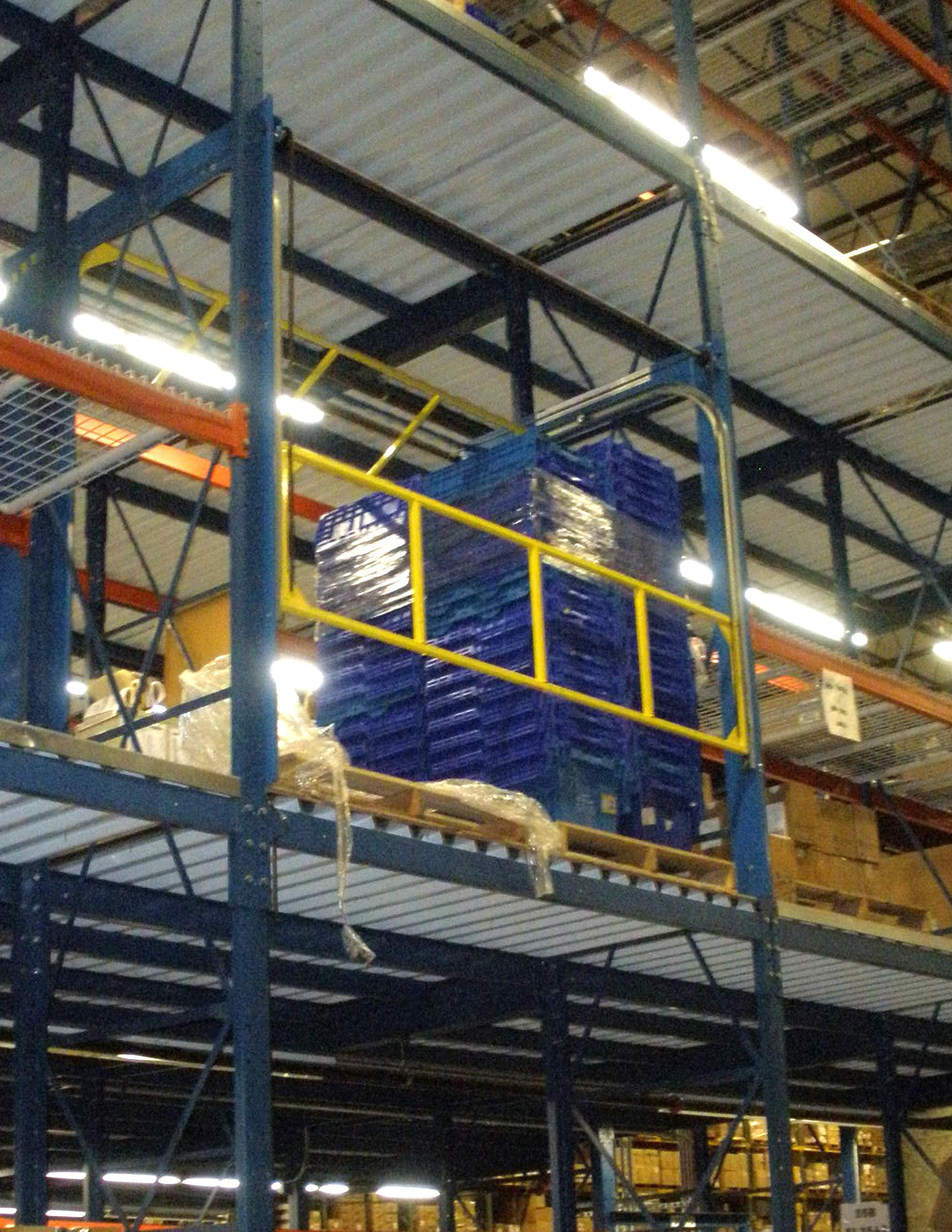
Safety in Rack Modules: The Case for Rack Supported Systems
Most distribution centers utilize rack modules in their operations in order to maximize storage space and operational efficiency. Rack modules can be designed in a wide variety of configurations depending on the applications. Often these configurations require space for workers to pick from the pallet drop areas throughout the rack structure, or to stack empty pallets and empty totes into open bays.
When workers are involved in operations on elevated work platforms and pick modules, it’s necessary to plan for safety and fall protection. There are a number of ways safety can be achieved, and industry standards like those issued by ANSI and OSHA require a dual-gate system. Safety advantages provided by dual-gate systems, like the models we offer, ensure that workers are safe at all times; when the ledge gate is open, the rear-side gate is closed, preventing the worker from access to the ledge. When the rear-side gate is open, the ledge-side gate closes, providing a safe, enclosed workstation while the bay is picked.
A dual-gate system also keeps the picker a safe distance from the lift truck loading a pallet, as a fixed barrier will be in place while the pallet is being pushed into the bay. This creates a physical barrier between the picker and a pallet being pushed into the area with the force of a lift truck.
A dual-gate safety system is now a standard in the industry, so the decision to install them to secure picking positions and empty pallet return bays is obvious. But the real decision is what type of dual-gate system. There are dual-gate pivot and Roly models, both of which will maintain a safe environment at all times; there are also rack-supported and free-standing gates.
A Pivot Gate has few moving parts and is often the most economical choice, but keep in mind that this design needs room for the gates to pivot, or arc, when operated. When the pivot gate is in use, the ledge-side gate extends out into the truck aisle, and the rear-side gate extends back into the picking aisle. This often is not an issue, but can be if the picking aisle is narrow, or if the lift truck is loading multiple levels.
A Roly Gate solves this issue as the design uses gates that open and close flush within the confines of the rack structure, so the ledge-side gate opens flush with the ledge, and the rear-side gate opens flush with the rear-side column.
Both of these designs are available in both free-standing and rack-supported configurations. When operations needs flexibility, and pallet drop areas frequently move locations within the facility, a freestanding safety gate model can be used efficiently within a rack module. The free-standing gate can be unbolted from the decking, moved to another location, then re-secured. We have seen this work well for some unique material handling operations, and with companies that require a flexible layout.
The other option is Rack-Supported safety gates. This style attaches directly to the existing rack uprights instead of being lagged down into the decking. The rack-supported model has three main advantages over a freestanding model: (1) space savings, (2) more secure connections and (3) cost savings. By utilizing the existing pallet racks for support, the rack-supported model takes up a minimum amount of space in the rack bay, gets tied into the entire rack system and uses few components.
You’ll also have to decide on the size of the safety gate. Because we’re talking about integrating with a rack-module, the existing bay size determines the width of the gate, but you’ll need to decide on the depth and the height that is required. The safety gate needs to be deep enough to accommodate the pallet without being so deep that it projects too far into the picking aisle. With a standard 48” deep pallet, the safety gate should provide a minimum of 56” in clearance to provide room to load the pallet into the area. Because most uprights are only 48” deep, often the safety gate will extend beyond the upright, either back into the picking aisle or into the lift-truck aisle with a platform extension. The safety gate should be made tall enough to accommodate the tallest pallet with some room factored in for fork truck lift-off space, and to allow pickers room to enter the bay to work the pallet, without being too tall that the raised gate is difficult to reach. Sometimes a beam may need to be removed to provide adequate height.
Many dual-gate systems that are both free-standing and rack-supported can be power operated with remote radio frequency controls. To learn more about whether or not to power operate a pallet drop gate, please see this blog post on the subject.
The decision to secure picking positions in a multi-level rack picking module should be an easy one. Where it gets complicated is deciding on which safety gate will best fit your application and how it should be sized and configured. This is where a professional in the industry should be consulted, either through a material handling consultant, distributor, or by reaching out to us.